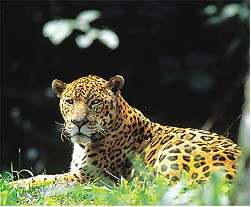When the first so-called civilized human beings on the European continent came across the current Brazilian territory over 500 years ago, the group of forests popularly known as Atlantic forest it dominated a territorial extension of more than 1.3 million km². For a long time, entire generations could glimpse the imposing magnitude of that forest, with its gigantic biodiversity, its trees, animals and fertile soil.
The relationship between human beings and nature seems to have always been cold and uneven. The predatory and wasteful exploitation of natural and forest resources has always been part of human history. In Brazil, the various economic “cycles”, such as that of gold, sugar cane, and coffee, devastated huge forest areas. The conversion of areas for agropastoral activities and silvicultural centers and a slight process of industrialization and urbanization bequeathed to society tiny portions of the forest throughout the territory.
By studying the short History of Brazil, we verify the history of the devastation, depredation and dilapidation of its nature, its forest, its environment. There are 500 uninterrupted years of occupation without the slightest concern for the environment, which led the Atlantic Forest to its near total extinction. The reasons and contexts are obviously varied, but it has never been as devastated as in the period of coffee expansion in the 19th century and the military dictatorship of 1964-1985. During the military period, the developmental policy that reached its peak in the 70s encouraged the construction of large hydroelectric plants, bridges, highways, dams, nuclear power plants, unbridled agricultural expansion and the implementation of large industrial conglomerates, such as Cubatao. Thus, gigantic areas of forests with their megadiversity were simply decimated, contributing as never before to their fateful fragmentation and weakening.
Today, what we have to see and discover in the former Atlantic Forest is only 12.5% of what is left. Its original territory passes through 17 Brazilian states, including the largest metropolises (and, consequently, the most polluting cities) of the country, São Paulo, Rio de Janeiro, Belo Horizonte and Curitiba, in a total space where more than 108 million people live, adding three thousand counties.
Do not stop now... There's more after the advertising ;)
Despite its imminent extinction and the awareness of government and civil bodies, the Atlantic Forest continues to be devastated. In 1997, one million trees were removed from the Serra da Cantareira region in São Paulo – considered the largest urban forest in the world. In the coastal region, the situation is no less chaotic for the forest, real estate speculation, demographic pressure and unruly occupation encourage environmental degradation.
The current Atlantic Forest conservation areas are just pathetic remnants of what was once a large forest. What we can do is try to learn from the mistakes of development in our societies. In this aspect, we cannot let a forest with the size of what the Amazon Forest is still today disappear amidst concrete, industries, pollution, overpopulation and immense fields of export monoculture agriculture: the pure manifestation of the unsustainable development of being human. In this sense, the study of the History of the Atlantic Forest can bring people the knowledge potential needed to improve our relationship with all of nature. Or do we want to continue our fallacious development and literally step over another rich forest like we've been doing for centuries?
Amílson Barbosa Henriques
Columnist Brazil School
Would you like to reference this text in a school or academic work? Look:
DANTAS, James. "Current situation of the Atlantic Forest"; Brazil School. Available in: https://brasilescola.uol.com.br/brasil/mata-atlantica-1.htm. Accessed on June 28, 2021.

